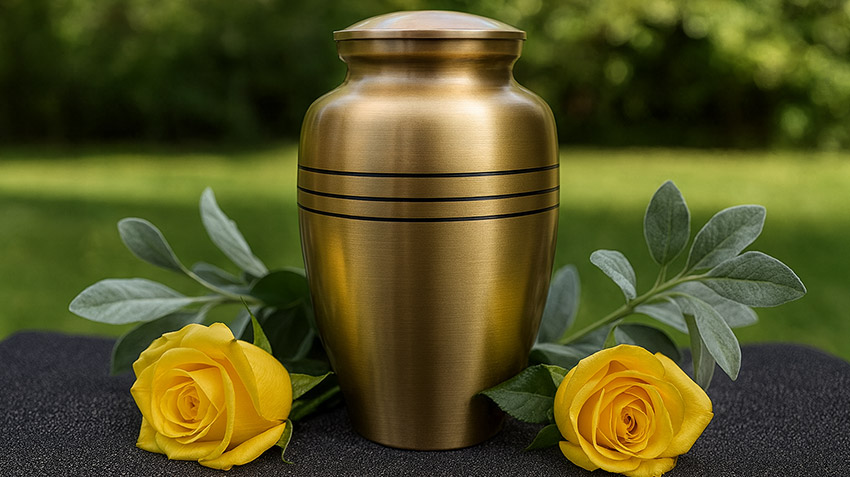
Cremation has become an increasingly chosen option for families making end-of-life arrangements.
This choice often stems from its affordability, lower environmental footprint, and flexibility compared to traditional burials. For many, it also offers a way to honor a loved one with unique memorialization options that feel personal and meaningful. Understanding the different cremation techniques can help families make informed decisions during an emotionally challenging time.
Grieving families often face the difficult task of balancing emotional wishes with practical considerations. By exploring the various methods, their benefits, and their limitations, you can choose an option that reflects your values and respects your loved one’s memory.
What is traditional flame-based cremation, and how does it work?
Traditional flame-based cremation techniques involve placing the body in a high-temperature chamber where it is exposed to intense heat until it is reduced to bone fragments. These remains are then processed into a fine, sand-like texture commonly referred to as ashes. This process usually takes between one and three hours, with temperatures typically ranging from 1400 to 1800 degrees Fahrenheit.
The main advantage of this method is its widespread availability. It is offered by most funeral homes and crematoriums, making it a practical choice for families seeking timely arrangements. It is also relatively fast, which may be important when families wish to hold services soon after passing. However, this method does consume fossil fuels and release emissions, which can be a concern for those prioritizing environmental impact. Traditional flame-based cremation is most suitable for families who value efficiency, accessibility, and a process that is well understood and accepted in their community.
What is water cremation (Alkaline Hydrolysis)?
Water cremation, also known as Alkaline Hydrolysis, is a newer process that uses a combination of water, heat, and an alkaline solution to accelerate natural decomposition. The body is placed in a sealed chamber filled with a water and alkali mixture that is gently heated. Over several hours, the soft tissues are broken down, leaving behind bone fragments that are dried and processed into ashes similar to those from traditional cremation.
This method is considered more eco-friendly because it uses significantly less energy and produces no direct emissions. The remaining liquid is sterile and contains no DNA, making it safe for disposal. While water cremation is legal and available in certain states, it is still restricted in others due to regulatory differences. The appearance of the remains is slightly different from flame-based cremation, often a lighter color, but otherwise very similar. Families who wish to prioritize sustainability while still having a process that produces ashes for memorialization may find water cremation appealing.
Can cremation be eco-friendly?
While traditional cremation has an environmental footprint, there are ways to make the process more sustainable. Some crematories use renewable or cleaner-burning fuels to power their equipment, reducing emissions. Newer cremation technology can also significantly cut energy consumption by improving heat efficiency. For families concerned with eco-conscious practices, combining these advancements with biodegradable urns or natural memorials can further reduce environmental impact. Choosing a Pittsburgh cremation services provider that embraces these practices is an important step toward making cremation part of a broader commitment to sustainability.
How can cremation ashes be memorialized?
Cremation ashes can be used to create deeply personal and lasting tributes. Families often choose to store the ashes in decorative urns, but there are many creative possibilities. Ashes can be transformed into jewelry, incorporated into works of art, or even added to coral reef restoration projects to support marine life. Some choose to plant a memorial tree with the ashes as a way of symbolizing life continuing. These personalized memorials can offer comfort by keeping a tangible connection to the loved one and by creating a meaningful place to reflect and remember.
What do different cultures and religions say about cremation?
Cremation has varied acceptance across cultures and religions. In Hinduism, it is a traditional practice tied closely to beliefs about the soul’s journey. In Buddhism, it is often embraced, especially in Asian cultures. Christianity has historically preferred burial, but many denominations now permit cremation, sometimes with guidelines about how ashes should be handled. Islam and Orthodox Judaism generally prohibit cremation, viewing burial as a religious requirement. Cultural customs may also dictate specific rituals before, during, or after the cremation process, such as prayers, offerings, or ceremonial gatherings. Understanding these perspectives can help ensure that a chosen cremation method aligns with spiritual beliefs and family traditions.
How do you choose the right cremation technique?
Selecting the most suitable cremation techniques involves weighing several factors. Budget is often a primary consideration, with traditional flame-based cremation generally costing less than water cremation, especially in areas where the latter is not widely available. Environmental concerns may lead families to explore water cremation or providers that use eco-friendly methods. Cultural or religious beliefs play an important role, as certain techniques may not be accepted within a faith tradition. Legal restrictions also matter, as not all states permit all forms of cremation. Speaking with a licensed funeral director can help you navigate these choices and ensure that the decision respects both practical needs and personal values.
Frequently Asked Questions
Below are some additional questions to consider:
Is cremation faster than a traditional burial?
Yes, the cremation process itself is much faster than a traditional burial. While burials involve multiple steps, including embalming, preparation, and scheduling of services, cremation can be completed within a few hours, allowing for more flexible memorial service planning.
Can multiple family members share cremation ashes?
Yes, cremation ashes can be divided into smaller portions so multiple family members can each keep a part in separate urns or keepsakes. This is a common choice for families who live in different locations.
Does cremation require embalming?
Embalming is generally not required for cremation unless there will be a public viewing before the process. Many families choose to forego embalming, which can lower costs and reduce chemical use.
Are there size or weight limits for cremation?
Cremation chambers do have size and weight limits, which can vary by facility. If there are concerns about meeting these limits, it is important to discuss them with the funeral provider in advance.
Can cremation be part of a traditional funeral service?
Yes, cremation can be incorporated into a traditional funeral format. The service can take place before or after the cremation, and families can still include viewings, religious rites, or other meaningful traditions.
Making informed choices about cremation techniques
Cremation techniques continue to evolve, offering families more options than ever before. From traditional flame-based methods to water cremation and eco-conscious innovations, each approach has its own advantages and limitations. By considering budget, environmental goals, cultural values, and legal factors, families can make a choice that feels right both emotionally and practically. Understanding the process and the different cremation techniques not only helps with decision-making but can also provide comfort in knowing that a loved one’s final arrangements reflect their life and values.



